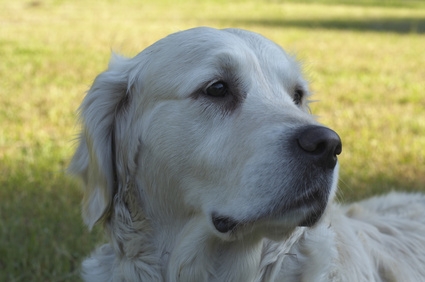Like humans, dogs need plenty of exercise to keep their lungs, heart, bones, joints and muscles strong. The simplest and most cost-effective exercise is walking outside. The change of environment and fresh air will help stimulate your dog physically as well as mentally. The new people, things, pets and smells will help to socialize your dog encouraging him to remain calm and adaptable in new situations.
Walking your dog can be counterproductive to your goals, however, if you are not adequately prepared to walk in tandem. For your sanity and your dog's safety it is critical to learn how to walk on a leash. Collar dog training is still one of the most popular means of training your pup although many dog owners suggest it may not be the most humane training method. A lot of dog owners are considering head halter training as a healthier alternative to collar dog training.
Before we talk more about collar dog training vs. head halter dog training you should consider this. Dog training requires a significant time commitment and an abundance of patience and understanding. If owners recognize that dogs are driven by instinctual drives, they may be more empathetic to a misbehaving dog which has most likely lacked attention and proper guidance in the past.
That being said, in my opinion, in order to ensure the physical and mental well-being of your pet, compulsion dog training (based on physical punishment which involves some level of discomfort or even pain, such as collar dog training) is not a feasible option when training most dogs. When selecting a training method, select one that utilizes positive reinforcement (rewarding appropriate behavior with a treat, toy or praise) which will not only teach your dog appropriate behavior but will help foster a stronger, trusting relationship between you and your dog. This type of training method can be achieved through the use of a head halter.
Training a dog with a head halter to walk politely is very simple. When the dog pulls stop immediately and refuse to go forward. Remember to never jerk or pull the leash aggressively as it could result in an injury. The pressure on his nose will encourage him to slow down. Only move forward when the leash is slack. Alternatively, if your dog gets distracted and moves to the side to sniff or grab something keep walking. As soon as your dog comes back to your side, reward him with praise.
The key is timing and consistency. Always reward your dog as soon as he has displayed the correct behavior and never reward your dog for inappropriate behavior. Inconsistency can lead a confused dog and a frustrated handler. Usually within 1-2 weeks of regular walking your dog will show great improvements making walks more enjoyable for you and your dog.
So as you can see collar dog training is not necessary to help teach most dogs to walk properly on a leash. Some form of collar dog training may be appropriate for a persistent puller" but should only be practiced by a trained handler. If you have used the head halter consistently and properly without results and feel that you may like to explore collar dog training seek the advice of a professional dog trainer or participate in a reputable obedience training class.

 Service Dog Training Programs
Service Dog Training Programs
Service
Service Dog Training Programs
Service Dog Training Programs
Service
 Puppy Toilet Training Tips
Puppy Toilet Training Tips
Puppy Toile
Puppy Toilet Training Tips
Puppy Toilet Training Tips
Puppy Toile
 How to Night House Break or Train a Dog or Puppy
How to Night House Break or Train a Dog or Pup
How to Night House Break or Train a Dog or Puppy
How to Night House Break or Train a Dog or Pup
 The Toilet Training Spray for a Puppy
The Toilet Training Spray for a Puppy
The Toilet Training Spray for a Puppy
The Toilet Training Spray for a Puppy
 Free Potty-Training Tips for Female Pit Bull Puppies
Free Potty-Training Tips for Female Pit Bull P
Free Potty-Training Tips for Female Pit Bull Puppies
Free Potty-Training Tips for Female Pit Bull P